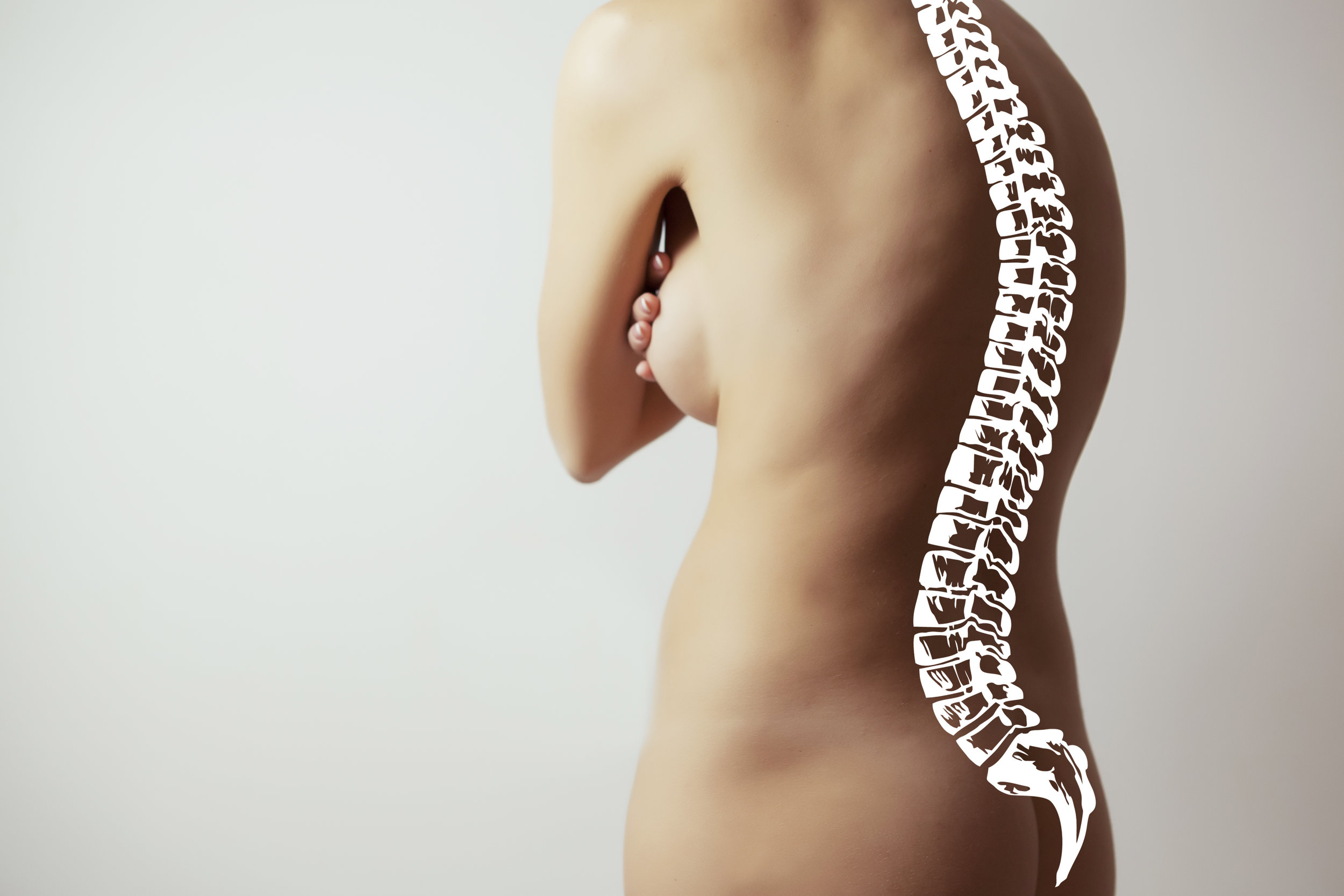6 Exercises to Improve Lower Back Health (Naturally)
LOWER BACK PAIN
Lower back pain is lousy and way too common. Whether it’s chronic or temporary, a dull ache or a stabbing sensation, mild or severe (or anywhere in between), it can disrupt your life. Lower back pain limits what you can do day-to-day, be it exercise, sitting for too long at a desk, or even playing with your kids. To avoid pain, many people restrict themselves from doing too much, which can lead to disuse syndrome – a.k.a “Use it or lose it.” Inactivity causes weakness, which results in even less activity. Weak muscles are more vulnerable to pain and can lead to further injuries. And so the cycle continues.
Back pain is an extremely common cause for visits to the doctor, the most common reason for missed work, and the single leading cause of disability worldwide. The pain itself often creates more fear and stress about what the pain “means,” in turn exacerbating and/or prolonging the pain by creating tension and stress in the body. Unfortunately, many people are simply unaware that it can be prevented by exercises that promote a well-balanced, resilient core. Enter my new video “Low Back Health.”
This sequence uses the proper mechanics of core work to heal or prevent low back pain so you can function at a higher level. These 6 exercises are rooted in physical therapy, Pilates, and biomechanics – and address all 360 degrees of your core.
Your entire back is part of your core, which includes your abs, hips, and glute muscles. In Pilates practice, and in my own methodology, we call this area your “powerhouse.” A strong powerhouse makes exercise safer and more effective. Low back pain can be significantly reduced or completely relieved through a combination of deep abdominal strengthening, postural awareness, and stretching exercises. The effectiveness comes when you apply these techniques to your everyday life so you can function optimally.
THE SPINE/CORE STABILITY
In order for the core to function optimally, it requires a stable pelvis and spine. They are the body’s central foundation – basically, its epicenter. While core strength is the ability to produce force, core stability is the ability to control the force we produce. With this control you can improve balance, mobility, proper posture, and experience less back pain and more functional strength, mobility, and stability for all movement.
In our normal lives we are constantly sitting, standing, lifting, twisting, bending over to put on shoes or pick something up, and turning around to see behind us. Many of us are also participating in intense workouts or athletics. All of these activities rely on core muscles. You need all 360 degrees of your core to be strong and stable in order to feel and function optimally.
Once a person experiences lower back pain, there is further weakness in the core-stabilizing muscles because of abnormal movement patterns. These exercises are designed to increase stability and strength around the structures in the back that are being stressed. They also work to correct abnormal movement patterns, and avoid deconditioning that results from decreased activity. The goal is to educate the mind and body in order to prevent progressive loss of activity because of fear of movement. By implementing these techniques into your everyday life, you begin to fix the problem at the cause rather than only treat the symptoms.
EXERCISE 1: CAT-COW
Cat-Cow is a gentle flow between two poses that warms up the body and brings flexibility to the spine. It stretches the back, torso, and neck, and softly stimulates and strengthens the abdominal organs. It also opens the chest, encouraging the breath to become slow and deep. The spinal movement of the two poses stimulates the kidneys and adrenal glands. Coordinating this movement with your breathing relieves stress and calms the mind.
This sequence also helps to develop postural awareness and balance throughout the body. It brings the spine into correct alignment and can help prevent back pain when practiced regularly. Cat-Cow also helps to stretch the body and prepare it for other activities.
NOTE: Those with neck injuries should keep the head in line with the torso, without dropping it forward or backward. Pregnant women and those with back injuries should only perform Cow Pose, bringing the spine back to neutral between poses. Do not let the belly drop between repetitions as this can strain the lower back. Always work within your own range of limits and abilities.
EXERCISE 2: QUADRUPED or BIRD-DOG
When it comes to learning how to use your core, nothing beats going back to basics with this simple exercise. Quadruped (or Bird-Dog) is used regularly by physical therapists and athletic trainers. It strengthens the core – more specifically, the abdominal muscles, lower back, glutes, and thighs. Although it’s an ‘isolation’ exercise, a lot is going on from head to toe while performing it. Therefore, it deepens the Mind-Body connection.
It’s easier to feel your abs working when on all fours than when lying on your back, since you’re working the muscles against gravity in this position. It may reduce back pain and tends to be safe during recovery from a back injury. A strong core and good spinal stability will help you in everyday tasks whenever you need to bend or twist.
NOTE: Never exceed your body’s capacity to control movement in the lower back. Avoid this exercise if you have acute shoulder pain.
SWIMMING
Pilates swimming is a fun mat exercise, but it is also quite challenging as it brings every part of the body into play. Luckily, it is also easy to modify. Swimming is a back-extension exercise that makes a great counter stretch for many exercises that require forward flexion.
This is a great exercise for your glutes, lower back, and entire core. It uses the gluteus maximus muscle, and you’ll often find this exercise in workouts geared toward giving more definition to your tush (not a bad bonus feature!). The hamstrings at the back of your thighs are used to lift your legs from the mat as well.
Swimming also targets the back extensor muscles, which are muscles needed to reduce the tension in your neck and shoulders. They are a key component in helping you maintain good posture throughout your life. You will also be keeping your abdominals engaged throughout the movement, especially the obliques. Your abs work together with your back muscles to support your spine and neck so you aren’t trying to lift your upper body and head with your neck and shoulder muscles.
NOTE: Avoid this exercise if you are pregnant or recovering from surgery.
SHOULDER BRIDGE
Bridges are extremely helpful if you want to strengthen and stabilize your lower back and shoulders. Bridge exercises help build core strength as they activate all of the core muscles. They can improve your posture by improving strength in the glutes and erector spinae – muscles that help you maintain proper posture while sitting or standing for an extended period of time. And of course, strengthening the core always helps with posture.
Bridging can also improve stamina and stability, reduce knee and back pain, and improve athletic performance. The posterior chain (glutes and hamstrings) tend to get neglected. Whether it’s daily activities or high-intensity workouts, the quadriceps usually takeover and do most of the work. Unfortunately, this pattern results in dominance of one muscle over another which can lead to injury and pain. Luckily, bridges fully engage the posterior chain, evening out muscle use. Strong glutes are a key factor when it comes to producing power. Power is what aids all athletic movements. Strengthening the glutes will help you run faster, jump higher, and be more explosive in all athletic endeavors.
NOTE: Avoid this exercise if you have spondylolysis or pain that radiates down your legs.
DEAD BUG
This exercise is a great way to stabilize the lower back during movement of the arms and legs. It is also one of the simplest exercises out there when it comes to strengthening your core without putting extra strain on your back. The Dead Bug exercise (which looks exactly like it sounds) works your deep inner core – your transverse abdominis, multifidus, diaphragm, and pelvic floor. This will protect and stabilize your spine, particularly when your limbs are in motion.
Often athletes cannot move their hips without engaging their lower back muscles, or they cannot raise their arms overhead without arching their backs and sticking out their ribs. The Dead Bug fixes these issues by teaching you to isolate movement at the hips and shoulders without moving your spine. Improving this movement pattern is important because it protects your spine from actions it was not designed to handle. It also improves coordination and deepens the Mind-Body connection.
NOTE: This exercise is safe for most individuals. However, depending on ability, limitations, and injury, modifications are offered and advisable.
MODIFIED ROLL-UP or PARTIAL STOMACH CRUNCH
One of the classic core-strengthening exercises is the Partial Stomach Crunch. Partial Crunches build strength in both your lower back and related stomach muscles (which makes this an ideal exercise for people with spondylosis). The version I instruct in this video will ultimately improve lung capacity while teaching the body to find mobility in the upper spine and shoulders as the lower body remains stable. It also makes it easier to improve the hip-rib connection and the inward pull of the navel to the spine because of what your eyes see throughout.
Mainly, this is a deep abdominal-strengthening and breathing exercise. It strengthens a very important muscle – the transverse abdominis – which provides a great deal of support for the lower back. In many people this muscle is extremely weak which can lead to lower back pain. This exercise is a very safe and gentle way to strengthen this muscle.
For a step-by-step, fully-cued sequence of these exercises and more, check out my new video, “Low Back Health!”
CONCLUDING THOUGHTS
Whether you currently experience or have previously suffered from low back pain, or if you simply – and wisely – want to prevent it, “Low Back Health” is for you. It is a series of specific exercises to strengthen the abdominal and lower back muscles and provide a ‘belt of muscle’ around the spine. When you do them consistently, these exercises can provide long-term relief from chronic or temporary lower back pain.
Once you go through an episode of lower back pain you must address it. If you do nothing about it or just take care of the symptoms, you are likely to develop a similar episode of back pain in the future. You may feel like resting, but movement is good for your back. Gentle self-care exercises should be started to restore mobility and decrease pain. Rather than make back pain a lifelong problem, make exercise a lifetime habit – specifically exercises that lead to low back health. Remember: “Use it or lose it.” When you live with chronic pain, exercise helps you maintain your mobility. It also keeps your muscles active, your joints flexible, and prevents disuse syndrome – weak muscles due to inactivity.
As always, if something doesn’t feel right, leave it out. Never sacrifice the intuition of the body for the glory of the ego.
General Disclaimer: It is always recommended to consult a physical therapist, physician, or healthcare professional if low back symptoms are chronic or present and significantly limiting function and mobility. Depending on the cause and intensity of your pain, some exercises may not be recommended.




